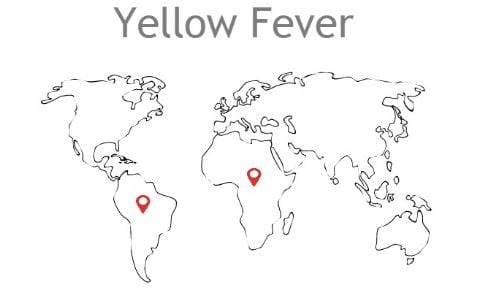
How to Prevent 4 Common Traveler Illnesses

1. Travelers’ Diarrhea
What you need to know
Travelers’ Diarrhea (TD) is usually experienced within the first few weeks of travel, but it may also occur at any point during your trip, and even after returning home. High-risk destinations are the developing countries of Latin America, Africa, Asia, and the Middle East. The cause of TD is primarily through contaminated food or water. TD can begin abruptly. Common symptoms are nausea, vomiting, diarrhea, abdominal cramping, bloating, fever, urgency, and malaise. Most cases begin and resolve in 1-2 days.
How to avoid
- Avoid eating foods or drinking beverages purchased from street vendors
- Avoid eating raw or under-cooked meat and seafood
- Avoid eating raw fruits or vegetables unless the traveler peels them
- Travel with packaged snacks and bottled water

2. Malaria
What you need to know
Malaria is a mosquito-born disease that can infect humans and other animals. Symptoms usually begin ten to fifteen days after being bitten by a mosquito carrying the disease. Malaria is most commonly found in tropical and subtropical areas. High-risk destinations are the Caribbean, Latin America, Africa and Asia. Symptoms of Malaria may include a fever or flu-like illness either while traveling in a maria-risk area or after returning home. If you experience any of these symptoms, you should seek medical attention right away.
How to avoid
- Avoid mosquito bites through the use of repellents
- Use a mosquito net around your bed
- Prior to traveling, ask your doctor about Malaria prevention medicines

3. Dengue Fever
What you need to know
Dengue Fever (DF) is a disease caused by the dengue virus and is transmitted to humans by infected mosquitoes. DF occurs mostly in tropical urban areas of the world. High-risk destinations are the Caribbean, Latin America, Australia, Africa, and Southeast Asia. The Principal symptoms of dengue are high fever, severe headache, severe pain behind the eyes, joint pain, muscle and bone pain, rash, and mild bleeding in the nose or gums or easy bruising. There are no vaccines or specific medications available to prevent or treat DF. If you think you have Dengue Fever rest, drink plenty of fluids and consult a physician. If you begin to develop vomiting and severe abdominal pain in the first 24 hours after the fever declines, go immediately to the hospital.
How to avoid
- Avoid mosquito bites through the use of repellents
- Use a mosquito net around your bed
- Eliminate the places where mosquitoes lay their eggs, such as artificial containers that hold water
- Use air conditioning and window or door screens to reduce the risk of mosquitoes coming indoors

4. Yellow Fever
What you need to know
Yellow Fever is a disease that spread to humans by the bite of a mosquito infected with the Yellow Fever Virus. An infected person will usually experience symptoms 3-6 days after being bitten by an infected mosquito. High-risk destinations include tropical and subtropical areas in South America and Africa. Symptoms of Yellow Fever include a sudden onset of fever, chills, severe headache, back pain, general body aches, nausea and vomiting, fatigue and weakness. You should consult a healthcare provider promptly if you are experiencing Yellow Fever symptoms.
How to avoid
- Yellow Fever can be prevented by vaccination. Consult a healthcare provider about the vaccine prior to traveling.
- Avoid mosquito bites through the use of repellents
- Use a mosquito net around your bed
International Volunteer Card travel protection policies provide coverage for unexpected illness medical expenses. You can check out all our different policies and purchase the right one for you before your next volunteer trip.
Please call (877.865.6877) or email (contact@volunteercard.com) with any questions!










